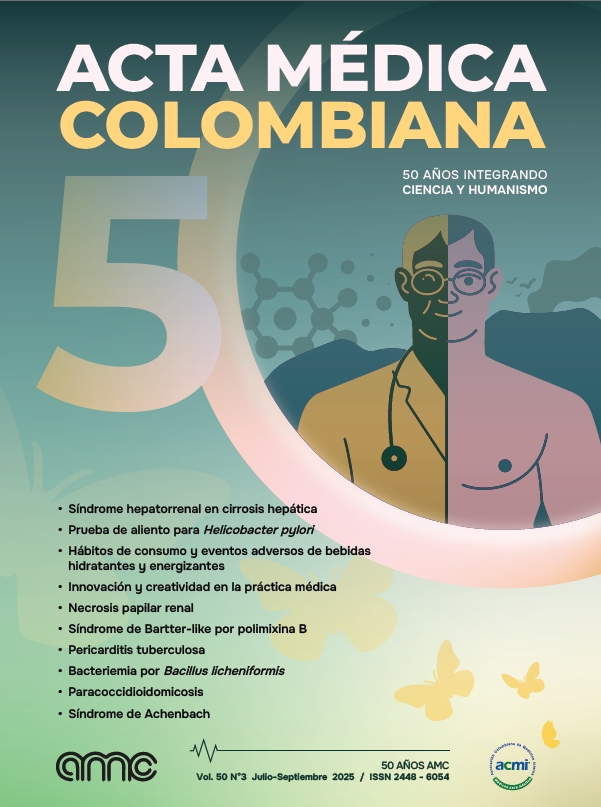Prevalence of hepatorenal syndrome in patients with hepatic cirrhosis at a university hospital in Colombia
Abstract
Introduction: hepatorenal syndrome (HRS) is a functional kidney failure with no significant histological abnormalities that occurs in patients with advanced liver disease. The objective of this study was to determine the prevalence of HRS in patients with hepatic cirrhosis treated at a university hospital in Colombia.
Method: this was a retrospective, descriptive, cross-sectional study. Patients over the age of 18 with hepatic cirrhosis treated at Hospital Universitario San Rafael de Tunja between January 1, 2016, and December 31, 2021, were included. Those with incomplete medical charts were excluded. Data collection was done by the investigators.
Results: the prevalence of HRS was 5.2%. Patients’ ages ranged from 28 to 89 years, and they were predominantly male (77.5%). The most frequent complications were coagulopathies, ascites and hepatic encephalopathy. A total of 12.8% required intensive care unit admission, 38.7% were classified as Child-Pugh C, and the mortality rate was 34.6%.
Conclusions: hepatorenal syndrome is considered a pathological process that causes kidney damage in patients with hepatic cirrhosis, with high morbidity and mortality. This study found a low prevalence compared to other national and international studies, indicating that early diagnosis and prompt treatment are needed to control complications and reduce mortality.
Metrics
Copyright (c) 2025 Ledmar Jovanny Vargas Rodriguez, Daniela Castillo, Cesar Lizarazo

This work is licensed under a Creative Commons Attribution 4.0 International License.
Acta Medica Colombiana uses the CC-BY 4.0 license. Authors retain all rights over their work.


